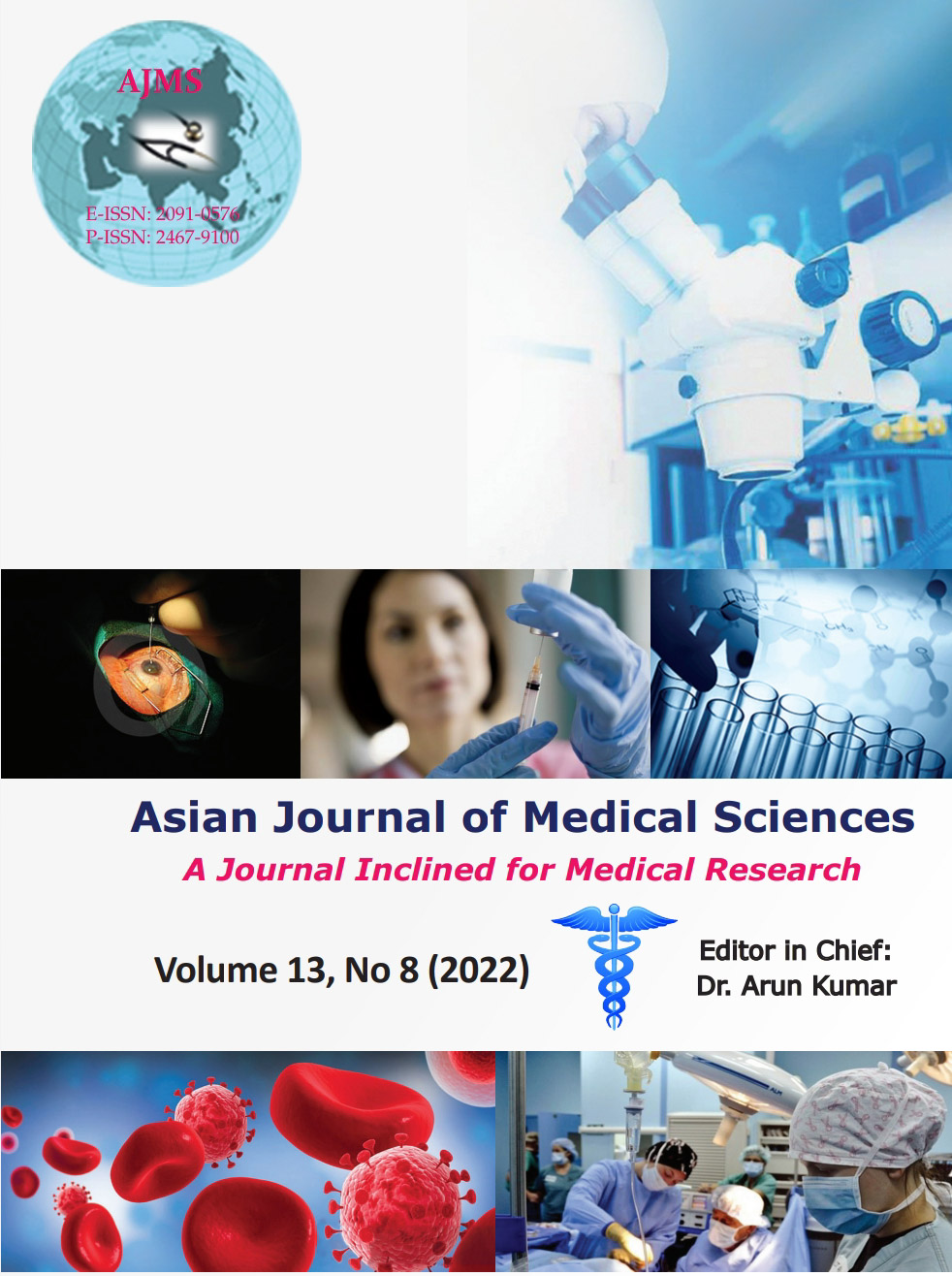Bacteriological profile of anaerobes in deep-seated abscess of patients attending a tertiary care hospital
Keywords:
Anaerobic bacteria; Deep-seated abscess; Anaerobic Gram positive bacilli; Anaerobic Gram negative bacilliAbstract
Background: Anaerobes are recognized as important human pathogens causing severe life threatening exogenous and endogenous infection if left untreated. Anaerobes are one of the most neglected pathogens in various clinical samples due to the problem in sample handling, technical difficulties in their cultivation, and identification along with prolonged turnaround time.
Aims and Objectives: The present study was undertaken to identify the different anaerobic organisms associated with deep seated abscess and their association with various risk.
Materials and Methods: Pus and fluid sample collected in sterile syringe or swab stick were immediately put in RCM and taken to the laboratory. Gram staining, ZN stain, and culture--both aerobic and anaerobic were done. Obligate anaerobes were checked for aerotolerance. Subcultures were done for identification of species level by Gram stain, colony morphology, biochemical tests, and final identification that were done by the Vitek 2 system.
Results: Out of the 170 samples, 144 (84.70%) were culture positive and the rest 26 (15.29%) were culture negative; 101 (70.1%) were aerobic, 23 (16%) anaerobes, and 20 (13.9%) mixed aerobic and anaerobic. A total of 51 obligate anaerobes were isolated from various samples. Out of which 32 (62.74 %) anaerobic Gram-positive cocci-Peptostreptococcus anaerobious being the most common and 13 (25.49%) anaerobic Gram-negative bacilli --Bacteroids fragilis being most common and 6 (11.76%) were anaerobic Gram-positive bacilli - Actinomyces meyeri being the most common. Diabetes mellitus was a significant associated factor. Maximum number of anaerobes was isolated from abscess over oral cavity followed by gangrenous foot, scrotal abscess, and diabetic foot.
Conclusion: Anaerobes are an important cause of deep-seated abscess—mostly being polymicrobial in nature. Incision--drainage and proper antibiotic therapy is necessary for their early control and prevention of complications.
Downloads
Downloads
Published
How to Cite
Issue
Section
License
Copyright (c) 2022 Asian Journal of Medical Sciences

This work is licensed under a Creative Commons Attribution-NonCommercial 4.0 International License.
Authors who publish with this journal agree to the following terms:
- The journal holds copyright and publishes the work under a Creative Commons CC-BY-NC license that permits use, distribution and reprduction in any medium, provided the original work is properly cited and is not used for commercial purposes. The journal should be recognised as the original publisher of this work.
- Authors are able to enter into separate, additional contractual arrangements for the non-exclusive distribution of the journal's published version of the work (e.g., post it to an institutional repository or publish it in a book), with an acknowledgement of its initial publication in this journal.
- Authors are permitted and encouraged to post their work online (e.g., in institutional repositories or on their website) prior to and during the submission process, as it can lead to productive exchanges, as well as earlier and greater citation of published work (See The Effect of Open Access).




